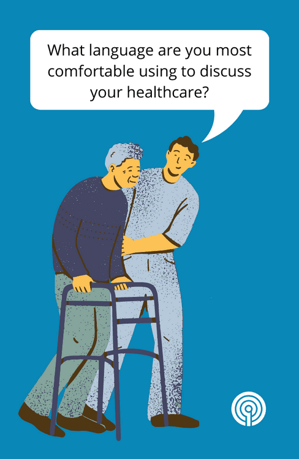
Approximately 21.5 million individuals in the United States belong to the LEP population. For these residents with Limited English Proficiency (LEP), navigating healthcare services can be particularly challenging. Language barriers often lead to reduced preventative care, increased medical errors, decreased patient adherence, and inferior clinical outcomes. Enhancing the availability of healthcare and language assistance for the LEP population is a concrete step toward improving health equity across the U.S.
Understand the LEP population
People with LEP are those who self-identify on the US Census that they speak English less than "very well." These individuals may not speak English as their primary language or have trouble reading, writing, or understanding English. By far, the most common language spoken by people with LEP in the United States is Spanish (64%), followed by Chinese (6%), Vietnamese (3%), Korean (2%), and Tagalog (2%).
While most of the LEP population resides in urban centers, smaller metropolitan areas see the most rapid growth of LEP communities.
LEP population and the immigrant experience
About 81% of the LEP population are foreign-born, with the remaining 19% primarily being second-generation offspring of immigrants. Interestingly, due to health and vaccination prerequisites for immigration, immigrants usually enter their host nation in better health compared to its general inhabitants, a phenomenon termed the "healthy immigrant effect." However, this health advantage diminishes over time.
Those in the LEP population often earn less, and newly arrived immigrants can face hurdles in socio-economic assimilation. Additionally, they confront disparities in healthcare access. Both medical practitioners and LEP patients concur that language obstacles can:
- Postpone healthcare access
- Obstruct the therapeutic relationship between patients and providers
- Diminish adherence to treatments and utilization of preventive measures
- Lead to inferior health results
The Affordable Care Act mandates that healthcare institutions provide LEP interpreter services and translated resources without additional fees. Employing qualified medical interpreters can lead to enhanced outcomes, elevated patient satisfaction, and reduced hospital readmissions for those in the LEP population. Resorting to untrained interpreters or relying on family members or community acquaintances for translations can result in miscommunication and confidentiality breaches.
When to use a medical interpreter
 Knowing when to call an interpreter for patient interactions can be difficult. For example, many people who speak with a heavy accent are proficient in English and do not require translation. Others may appear to speak and understand English very well but need assistance for more complex medical conversations.
Knowing when to call an interpreter for patient interactions can be difficult. For example, many people who speak with a heavy accent are proficient in English and do not require translation. Others may appear to speak and understand English very well but need assistance for more complex medical conversations.
It is best to ask rather than to assume. Use an open-ended question, such as, "What language are you most comfortable using to discuss your healthcare?"
But ultimately, a medical interpreter should be involved whenever there is a potential for miscommunication. If the patient or family is resistant, remind them they have a right to a medical interpreter at no cost and that professional interpretation is the best way to avoid misunderstandings that could affect their healthcare.
Fostering successful interpreter-assisted patient interactions
Whether working with a medical interpreter in person, on video, or via telephone, it can be challenging to build successful patient relationships that an interpreter mediates. The most important thing to do is focus on the patient, not the interpreter. When speaking, make eye contact with your patient and speak directly to the patient (“Mrs. Padilla, your test showed…”) rather than speaking to the interpreter about the patient (“tell her that her test showed…”). When it's your turn to listen, note your patient's body language, facial expression, tone, and pace.
You can do more to improve your interactions with our tips and best practices for working with medical interpreters.
LEP population and the moral imperative
Healthcare providers have a moral imperative to provide high-quality, equitable care to all patients. Too often, healthcare organizations and individual practitioners assume that substandard care for patients with LEP is unavoidable or too burdensome to address. But the healthcare industry can mitigate linguistic inequities by investing in technologically-advanced interpreter services, training staff on how to effectively communicate via medical interpreters, and developing organizational cultures that prioritize health equity for all patients.
